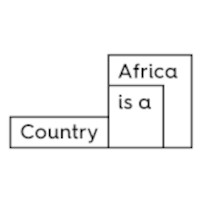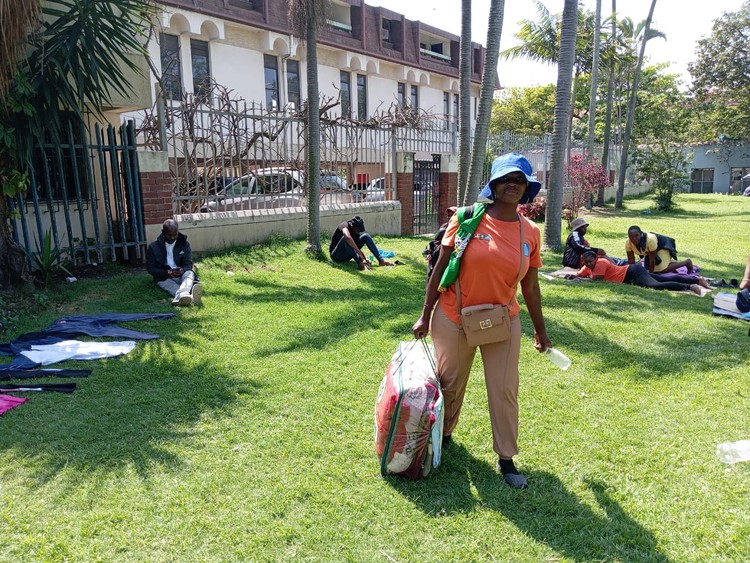Predatory tech giant is at the center of a heritage site land grab, pitting indigenous and environmental activists against city authorities.
Photo by Marques Thomas on Unsplash
At the confluence of the Liesbeek and the Black Rivers in Cape Town, Amazon (the tech and retail colonizer, not the river) is building its South African headquarters. The R4.6 billion mega-development is on a site so significant it is not an exaggeration to call it ground zero for colonial dispossession in Southern Africa. The property developer, for its part, is using tactics straight out of the colonial divide-and-rule playbook to undermine resistance. And the city’s Democratic Alliance (DA)-run municipality has been falling over itself to help (the DA, is a white, neoliberal party and the country’s official opposition).
The Goringhaicona Khoi Khoin Indigenous Traditional Council (GKKITC) and the Observatory Civic Association (OCA) brought a legal challenge against the developers. In March 2022, a High Court judge ordered a halt to construction until a judicial review could examine how the project was given heritage and environmental approval. Heritage Western Cape, the provincial heritage authority, believed the River Club site, as it’s called, should be considered for protection as a National Heritage Site. What’s more, the City of Cape Town’s own Environmental Management Department concluded that the development doesn’t meet the municipality’s policies on the environment. Nevertheless, the DA-run province and the mayor of Cape Town pushed the project through.
The GKKITC and its spokesperson, Tauriq Jenkins, have led the fight against the development since the start, along with a coalition of other indigenous councils, civic associations, religious bodies, and environmental groups. They’ve been a thorn in the side of the developer, Liesbeek Leisure Property Trust (LLPT), who bought the River Club from Transnet, for R12 million, a paltry sum in Cape Town’s stratospheric property market. Transnet is a state-owned enterprise dogged by corruption investigations.
To parry the righteous objections of indigenous groups, LLPT made a sweetheart deal with a newly minted formation calling themselves the First Nations Collective. After a meeting between the two, a “cultural, heritage and media center” was suddenly announced as part of the development—something that hadn’t appeared in the original proposal. Details of the agreement aren’t public, but the First Nations Collective soon made pronouncements that they were in favor of the River Club development. The LLPT lost no time in weaponizing this support, bringing in Resolve Communications, a PR company led by former DA party leader, Tony Leon. They trumpeted the First Nations Collective’s support and the economic benefits of the development.
The High Court ruling halting the construction was a blow to the developer, the judge ruling that economic benefits could never override the rights of indigenous people. In response, articles and slick videos decried the loss of employment the interdict represented and attacked the GKKITC and OCA. An anonymous website sprang up with blog posts smearing Jenkins. The First Nations Collective held a press conference flip-flopping on its earlier stance, now denying the site had heritage value, saying that the land had only ever been uninhabitable marshland. While the PR whirlwind spun on, LLPT simply ignored the interdict and continued construction, without facing any consequences.
Then, on November 8, 2022, the developer pulled off what seemed like a conclusive victory. A full bench of the Western Cape High Court accepted a story presented by LLPT-affiliated lawyers purporting to act on behalf of the GKKITC that painted its spokesperson, Tauriq Jenkins, as a fraud. Incredibly, Jenkins, who was unable to afford legal representation at the time, was not given the opportunity by the court to counter these fraudulent claims.
In July this year, four whistle-blowers came forward with details of how the legal team, with the involvement of the developers, used outsiders to legally hijack the GKKITC, all with the aim of quashing resistance to the building project. The whistle-blowers’ affidavits confirm Tauriq Jenkins’ legitimacy as leader of the GKKITC. They lay out a conspiracy whose mastermind was none other than the head of the LLPT, with help from a hired-gun attorney named Tim Dunn. It’s alleged that the lawyer faked GKKITC resolutions and had members of a splinter group sign them.
Some of the whistle-blowers say they were offered large sums of money in return for their support. Others say they were tricked into signing documents. One Muslim whistle-blower said she objected to being served pork at a meeting paid for by the developer’s representative and was told “to put the pork to one side and eat the rest of the food so as not to insult our benefactors.”
Amazon has never responded to requests for comment on the contentious development, but it’s known they were offered five other sites, none of which have the same heritage, spiritual and environmental importance. The tech giant has had plenty of time to reconsider its choice, and to hear what indigenous communities and historians have said about their planned campus: that the River Club already has a name: Igamirodi !khaes, “the place where the stars gather;” that for millennia, Khoi herders would drive their cattle onto the land for seasonal grazing; that the confluence of the two rivers holds spiritual significance for indigenous communities to this day.
But it’s a place of value to all, not just to Khoi Khoin descendants. For Black South Africans, it carries a history of early anti-colonial resistance, of being the site of the first colonial land grabs. It was where the apartheid boundary between white and Black was first actualized.
In 1510, the very first battle against colonial forces in Southern Africa swept through the River Club site. Khoi soldiers drove off a Portuguese invading party and killed its leader, Viceroy Francisco D’Almeida. Dutch colonial efforts were more persistent, and under Jan van Riebeeck, these forces secured the site at the confluence of the rivers. The same territory constituted the first parcels of land Van Riebeeck apportioned to Dutch settlers in 1657, making it the original site of colonial dispossession in Southern Africa.
Ignominious episodes continued to burden the land thereafter: it was the site where enslaved people were first employed in Southern Africa for agriculture. Van Riebeeck planted his notorious Pega-Pega boundary on the land—a wild almond hedge that served as a fence to bar indigenous populations. For the colonizers, it represented the division between the “civilized Europeans” and the “uncivilized African world.”
Wars of resistance that killed and displaced countless Khoi and San people, the genocide of the San, the century-long Cape Frontier Wars against the amaXhosa and other people to the east, British colonial rule, the Native Land Act and apartheid—all these can be seen to flow from the site now known as the River Club.
The City of Cape Town municipality is desperate to position itself as a property developer-friendly, tech-friendly hub. It’s done precious little to redress spatial apartheid, and colonial dispossession is barely acknowledged. Infamously, former DA leader Helen Zille, still an enormously influential figure in the party, once tweeted that colonialism wasn’t all bad, although she was later forced to apologize for the comment.
Whatever alternative visions there are for the River Club, they must involve indigenous communities and other Black South Africans. It’s been suggested a Truth and Reconciliation Commission for the Khoi and San be set up, with restorative justice, restitution, and healing as its focus.
As for the concrete already on the land? Precedents for demolition have been set in India and South Africa on the grounds of building code violations, and in Spain on environmental grounds. It remains to be seen whether such an outcome can be reached in developer-friendly Cape Town.
This article is from an upcoming issue of Amandla! as part of our running partnership with the South African publication.






